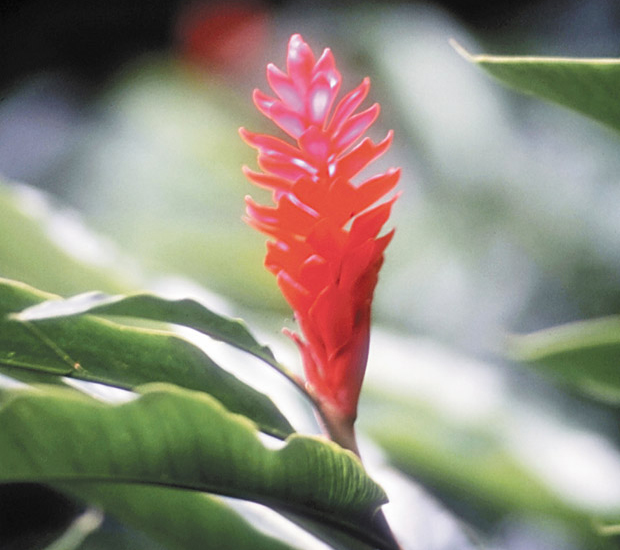Every night, my husband Scott and I take our dog on a long walk through the neighborhood, taking note of homes, yards and fences that we like. Lately, what has been catching my eye has been the beautiful ornamental ginger in many of our neighbors’ yards. One night, I commented to Scott, “I should have brought my scissors.”
His response: “That’s stealing. Why don’t you just grow your own?”
The thought hadn’t occurred to me. I decided to look into what it would take to do it properly. That’s when I came across the article “Ornamental Gingers, Red and Pink” by Kent Kobayashi, Janette McEwen and Andrew Kaufman, from the Department of Tropical Plant and Soil Sciences at the University of Hawaii at Manoa. If you want to grow your own ornamental ginger, consider some of their advice:
Start with the right environment. Kobayashi et al. recommend fertile, organically rich, moist and well drained soil with a pH range of 6.0 to 6.8. How can you find out your soil’s pH? Use a soil testing kit, available at many hardware stores and garden centers. Follow the kit’s instructions, and be sure to test more than once and with soil that is fairly dry. Wet soil can give false readings.
Next, ensure that the area receives the right amount of light. Red ginger grows best in full sun, but also does well in partial sun and light shade. Pink ginger, on the other hand, requires a bit more shade. Kobayashi et al. recommend 30 percent shade for pink ginger because of the plants susceptibility to what they call tip-burn disorder. Other contributors to tip burn in both varieties include exposure to wind and salt. Keep the plants protected to avoid tip burn and discoloration.
When it comes to watering, pay attention to the rain. If there is moderate rainfall, the authors say the ginger does better with supplemental irrigation.
Keep the soil moist. If it hasn’t rained recently, then add water. The authors recommend 1 inch or more of water per week from irrigation in times of drought. Overall, they say you will achieve the best flowers with generous irrigation and fertilizing once per month.
If you want to harvest the flowers for vase display, the authors recommend cutting when the bracts are about two-thirds to three-four ths open. If at all possible, cut the entire shoot at ground level. The longer the stem, the longer the postharvest life. In fact, Kobayashi et al. say that vase life can vary from five to 25.5 days.
Have a question or comment for Joanne? Email her at thefixisinhawaii@gmail.com.

